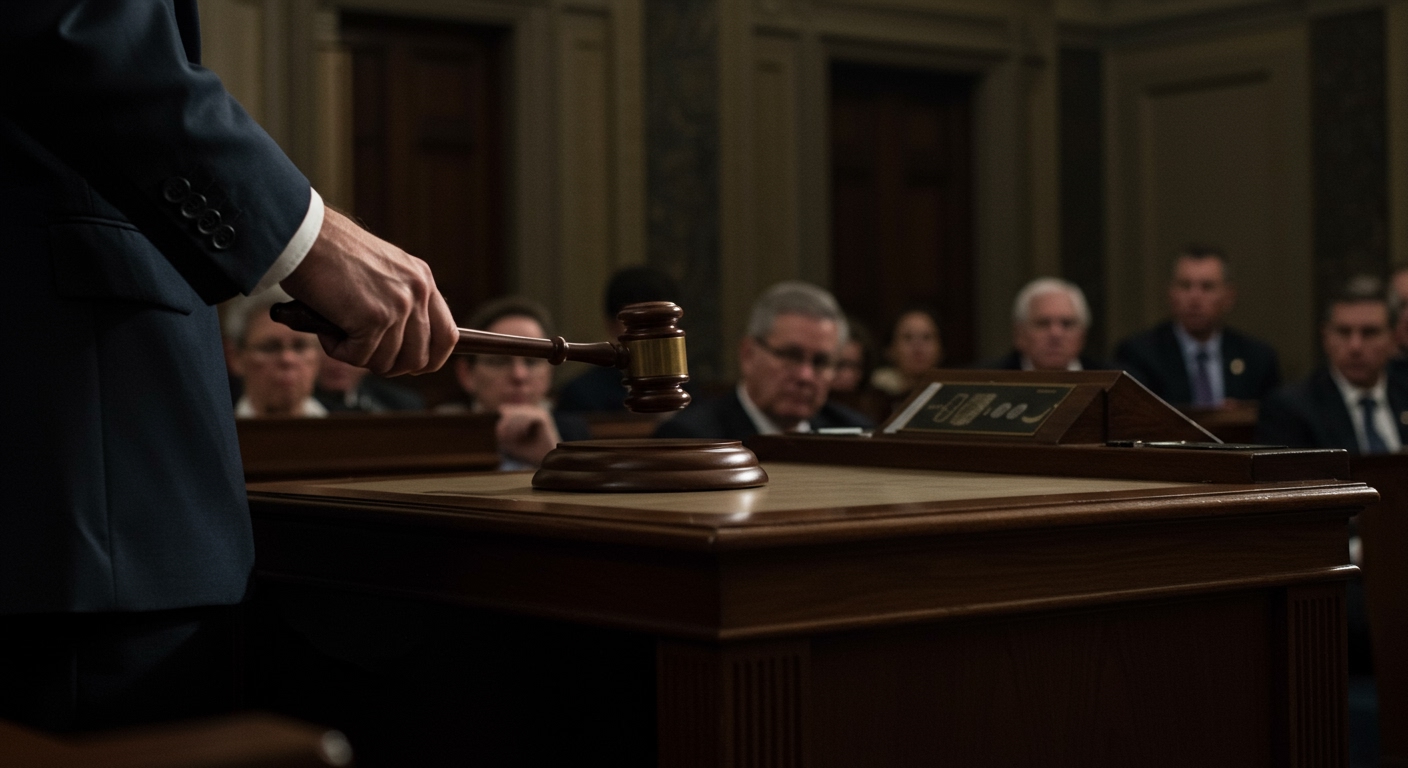Washington, D.C. — The United States Senate delivered a pivotal legislative victory to President Donald Trump on Tuesday, July 1, 2025, narrowly approving a sweeping tax cut and spending bill after a rare tie forced Vice President JD Vance to cast the deciding vote. The measure, informally dubbed by some as the “One Big Beautiful Bill,” advanced to the House of Representatives following a dramatic 50-50 split on the Senate floor.
A Divided Senate
The final vote underscored deep divisions within the upper chamber and across party lines. The 50-50 deadlock necessitated the intervention of Vice President Vance, exercising his constitutional authority as President of the Senate to break ties. The opposition bloc comprised all 47 Democratic senators present, joined by three Republican senators: Rand Paul of Kentucky, Tom Tillis of North Carolina, and Susan Collins of Maine. Their dissent highlights a significant divergence within the Republican party on fiscal policy and the bill’s broader implications.
Over the course of the session, senators considered more than 45 amendments to the legislation, reflecting the intense debate and myriad concerns surrounding its provisions. Despite numerous attempts to alter the bill’s contents, the core framework ultimately prevailed.
Key Provisions and Anticipated Impacts
The approved legislation is reported to enact several significant changes to federal fiscal policy. A central feature is the permanent extension of tax cuts first implemented during President Trump’s previous administration. This move is expected to reshape the tax landscape for individuals and corporations for years to come.
Conversely, the bill reportedly mandates substantial reductions in funding for crucial social services. According to summaries, programs such as Medicaid, which provides health coverage to low-income individuals and families, and food subsidies are slated for funding cuts. These reductions have drawn sharp criticism from opponents who argue they will disproportionately harm vulnerable populations.
In addition to shifts in tax and social spending, the bill is expected to roll back existing federal incentives aimed at promoting renewable energy sources and electric vehicles. This aspect of the legislation signals a potential shift away from policies designed to combat climate change and transition to cleaner energy.
Nonpartisan Estimates Detail Consequences
Nonpartisan analyses of the bill’s potential effects paint a concerning picture for federal finances and income inequality. Estimates suggest the legislation would significantly add to the national deficit over time, raising questions about fiscal sustainability.
Furthermore, these assessments indicate that the benefits of the tax cuts would disproportionately accrue to the highest earners, exacerbating existing wealth and income disparities. Conversely, the analyses project a negative impact on the poorest Americans, who rely more heavily on the social services facing funding reductions.
Perhaps one of the most significant projected consequences highlighted by nonpartisan groups is the potential for a substantial loss of health insurance coverage. Estimates suggest that approximately 12 million people could lose their health insurance as a result of the bill’s provisions, particularly those impacting Medicaid.
Path to the House
With Senate passage secured, the focus now shifts to the House of Representatives. The bill advances to the House, which faces pressure to act quickly to meet President Trump’s stated deadline of July 4th. The path forward in the House may present its own set of challenges, given the bill’s controversial nature and the deep divisions it has already exposed in the Senate.
The narrow Senate vote, the reliance on the Vice President’s tie-breaking authority, and the significant projected impacts underscore the high stakes involved in this legislative battle, setting the stage for potentially rapid action and further debate in the House.














